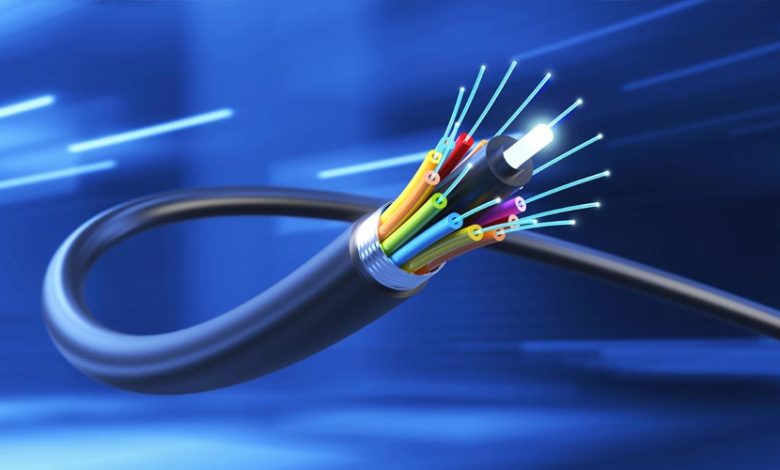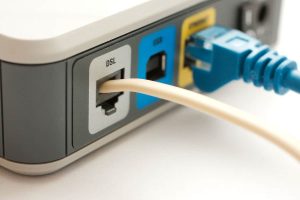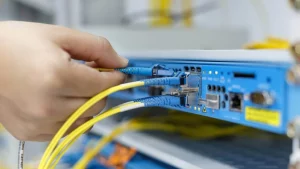Cable, Fiber, and DSL: Everything You Need to Know

Choosing amongst available internet options is a crucial choice. However, it is frequently exceedingly tough. Should you go for Frontier’s fibre service? Would Spectrum’s internet service be a better value than Comcast’s? Or should you choose for readily accessible DSL services? In various services of the United States, fibre, cable, and DSL are the most prevalent types of internet service. This blog examines their similarities and differences.
DSL Internet is The Most Available

DSL, or Digital Subscriber Line internet, was one of the first forms of internet connectivity. DSL service operates on the same copper line as your phone. It uses a DSL modem to send data from your computer to your internet provider. DSL speeds are determined by your proximity to your provider’s network centre. That means your speeds will be slower as you get further away.
DSL companies have improved their infrastructure over time to give better speeds. Some high-speed DSL services have download speeds of up to 140 Mbps. However, average speeds remain at 25 Mbps or less for the most part. DSL internet typically has faster download speeds than upload speeds. Other than uploading huge videos, high-resolution photos, and enormous files, this makes it ideal for most everyday activities.
In comparison to fibre internet, DSL offers substantially greater reach in the United States. Certain states, however, such as Maryland, New Jersey, Delaware, and Connecticut, have no DSL coverage at all. Having said that, DSL remains a more accessible option when compared to other internet services. Unfortunately, due to limited capacity and unreliable speeds, it should be your least preferred option.
Fiber Internet Offers the Best Speeds

Today’s most advanced form of internet service is fiber-optic internet. Instead of wires or cables, fiber-optic internet uses glass or plastic fibres to carry data. Unlike cable and DSL internet, fibre internet uses light signals to deliver data. Due to the fact that light travels faster than anything else, fibre internet providers may offer internet speeds of up to 1 Gbps. That’s 1,000 megabits per second!
There’s more. Fiber-optic internet offers upload and download speeds that are same. That indicates that your upload and download speeds are same. Due to its huge bandwidth and speed, fiber-optic internet offers the greatest internet experience. But there are further factors to consider. During peak hours, fibre internet consumers do not encounter slowed speeds. Fiber uses a dedicated connection to your home, as opposed to a connection shared with your neighbourhood or building.
All of these advantages make fibre internet the preferred option. So why aren’t more people using it rather than DSL or cable? The issue is that fibre internet access is not universal. Rather, it is exclusive to a small number of markets. This is because fiber-optic infrastructure is expensive and providers see greater value in investing in densely populated areas. In small towns and rural areas, fibre internet will likely not be an option. Additionally, fibre internet tends to be more expensive than both DSL and cable. However, if you find in an area with fibre coverage, your decision should be easy.
Cable Internet Offers Value

The speeds and capabilities of cable internet are distinct from those of fibre and cable internet. Neither does it rely on your regular telephone line or fiber-optic wires. You can get online with your cable modem because cable internet uses the same coaxial cable as your cable service. You may watch both online video and television without any services. Compared to fibre optic internet, cable internet is typically more widely available and less expensive. On the other hand, it’s far quicker than DSL. Depending on where you reside, cable internet speeds can go as high as 500 Mbps.
The service of cable internet in the United States is second to none. High-speed cable internet with download speeds of 100 Mbps or more is available in most of the states. Most homes still choose for cable internet because it provides sufficient bandwidth and download speeds. In comparison to DSL, the speeds are far more stable and rapid. However, blackouts do occur occasionally.
Many cable providers also limit how much data you can use in a month. Stay sure you don’t go over this number. If not, you might have to find a lot of extra money. During peak times, the speed of cable internet can slow down. But it’s still one of the cheapest and most widely available choices. If you can’t get fibre internet, which is usually the case, cable internet is the best option.
The Bottom Line

Ultimately, your choice of internet service and provider is determined by what is accessible. In urban cores such as San Francisco and New York, it may be easier to find fibre internet service providers. In this instance, fibre will always provide the best experience. However, if fibre is not available in your option or is too expensive, cable internet should suffice. It is both inexpensive and provides extensive coverage. If cable internet providers in your area are subpar, you may need to consider DSL as an option. However, we hope it won’t come to that.




